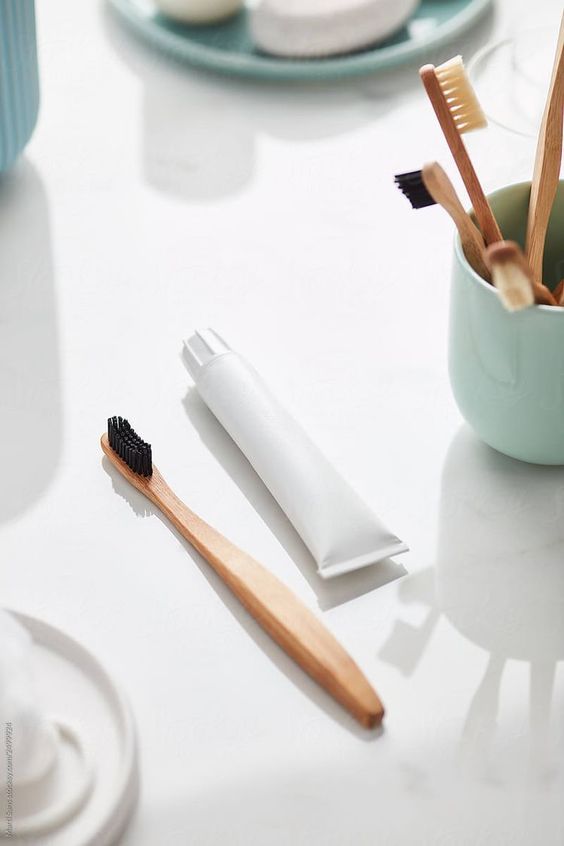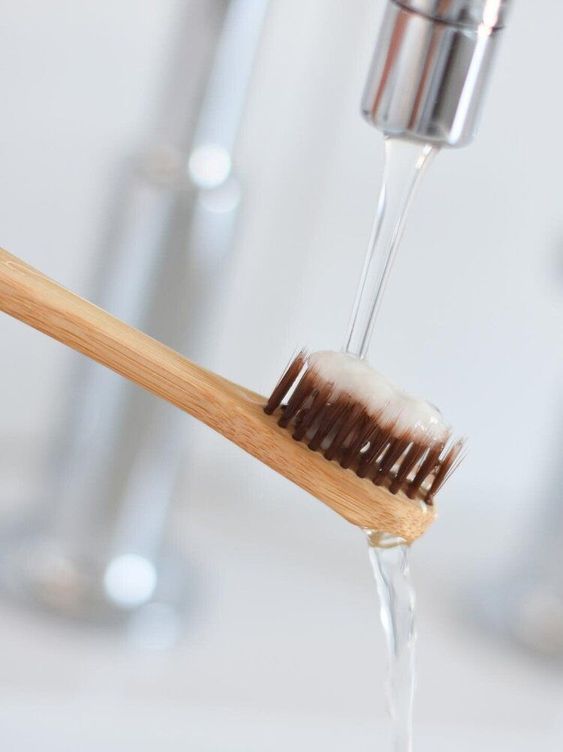Here’s a simple DIY remineralizing toothpaste recipe that avoids fluoride, glycerin, SLS, and other harmful ingredients. It’s kid-friendly, eco-friendly with zero waste, gentle on sensitive teeth, and delicious in taste!
NATURAL TOOTHPASTE

Natural toothpaste always seemed a bit strange to me, especially since most commercial options aren’t safe to swallow. You’re putting it in your mouth, one of the most absorbent areas of your body, yet it’s not meant to be ingested. That just doesn’t sit right with me.
I prefer using toothpaste that’s completely safe for my body, both inside and out. This is particularly important when choosing a toothpaste for my kids. I love this remineralizing toothpaste for toddlers because it’s so natural and safe for them to use!
CAN I MAKE MY OWN TOOTHPASTE?
Absolutely! Making your own toothpaste is one of the simplest natural body care products you can create. In my opinion, this is the best remineralizing toothpaste recipe. Here are the ingredients I like to use:
- Organic, virgin coconut oil: Great for oral health, and some people even use it for oil pulling to help heal cavities.
- Food-grade calcium powder: Provides plenty of calcium to strengthen tooth enamel.
- Baking soda: I use a small amount for its cleansing properties, but not too much, as it can be harsh on teeth.
- Xylitol: There’s some debate about ingesting it, but since it helps prevent cavities and strengthen teeth, I include it. Plus, it gives the toothpaste a pleasant taste. I opt for non-GMO, non-corn xylitol.
- Therapeutic-grade essential oils from Plant Therapy: These add extra oral health benefits. Some of my favorites include peppermint, spearmint, wintergreen, cinnamon, clove, lemon, and orange.
WHAT I DON’T INCLUDE IN MY HOMEMADE TOOTHPASTE
Many DIY remineralizing toothpaste recipes include clay, such as bentonite clay. However, I choose not to include it because bentonite clay can contain aluminum, which is toxic and definitely not something I want in my mouth several times a day!
While most DIY remineralizing toothpaste recipes don’t feature this ingredient, I think it’s important to mention it. A common ingredient in many commercial toothpastes labeled as “natural” is glycerin.
So, what’s the problem with glycerin? It actually coats teeth and can linger on them for a long time. When glycerin is present, teeth cannot absorb minerals effectively, disrupting and preventing the remineralization process.
Avoiding glycerin in commercial toothpaste is one compelling reason to create this DIY remineralizing toothpaste recipe yourself.
DIY REMINERALIZING TOOTHPASTE DIRECTIONS
INGREDIENTS
- 3/4 cup virgin coconut oil
- 3/4 cup calcium powder
- 1/3 cup xylitol (non-corn, non-GMO is best)
- 2 tsp baking soda
- 48 drops essential oil (peppermint, spearmint, wintergreen, cinnamon, clove, or citrus oils are good choices)
INSTRUCTIONS
- Melt the coconut oil until it becomes liquid.
- Combine the dry ingredients (calcium powder, xylitol, and baking soda) and mix well.
- Add the melted coconut oil to the dry mixture and combine thoroughly using a whisk or immersion blender.
- Incorporate the essential oils and mix again until everything is well blended. Ensure the essential oils are thoroughly mixed in to prevent separation later.
- Pour the mixture into a glass storage jar and allow it to cool and solidify.
- Enjoy your homemade remineralizing toothpaste!
HOW DOES REMINERALIZING TOOTHPASTE WORK?
As I mentioned earlier, our diet plays a crucial role in maintaining healthy teeth, significantly impacting the presence of decay and cavities. A nutrient-dense diet should be our primary focus when it comes to oral health.
However, what we apply to the surface of our teeth also affects their health. I designed this DIY remineralizing toothpaste with this dual purpose in mind. It contains plenty of calcium to support healthy enamel.
I consciously avoid ingredients that could inhibit remineralization, such as glycerin. Glycerin coats the teeth and prevents them from absorbing essential minerals, and it often appears in commercial toothpaste labeled as “natural.” This is a form of greenwashing, misleading consumers into thinking these products are healthy while they contain harmful chemicals.
My family has been using this DIY remineralizing toothpaste for quite a while now, and we’ve seen great results.
To keep things hygienic when multiple people are using the same jar of toothpaste, I like to use little wooden scoops to transfer the toothpaste onto our toothbrushes.
CONCLUSION
DIY remineralizing toothpaste is a natural and affordable alternative to store-bought options. By using mineral-rich ingredients like calcium and phosphorus, homemade toothpaste can help strengthen tooth enamel and prevent cavities. However, it’s important to remember that DIY toothpaste should complement, not replace, professional dental care. If you decide to make your own, ensure you use high-quality ingredients, follow the recipe closely, and consult with a dentist for personalized guidance. Combining DIY toothpaste with regular dental hygiene can lead to a healthier smile.



